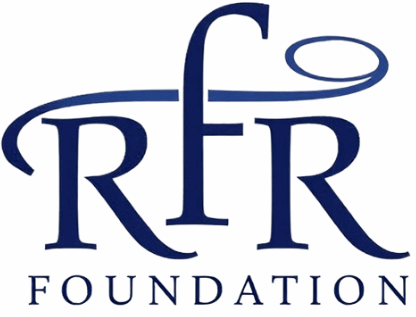Securing scholarships for undergraduate studies in 2025 is a vital step for students aiming to reduce financial burdens and pursue quality education. With increasing tuition costs and the growing number of global academic opportunities, finding the right scholarship can be challenging. This article provides a detailed guide on how undergraduate students can identify, apply for, and maximize scholarship opportunities in 2025.
Why Undergraduate Scholarships Are Important
Undergraduate scholarships not only provide financial assistance but also offer recognition of academic excellence, leadership skills, and personal achievements. Scholarships help students focus on their studies, participate in extracurricular activities, and sometimes gain access to global exposure through international programs. For many, scholarships can make the difference between attending their dream university or settling for less.
Steps to Find Scholarships for Undergraduate Students
1. Start Early and Research Thoroughly
Beginning the scholarship search early is crucial. Most scholarships have strict deadlines, and preparing documents, essays, and recommendations takes time. Start by researching:
- University-specific scholarships
- Government-funded programs
- Private organizations and foundations
Early research ensures you can identify all possible opportunities and meet application requirements without stress.
2. Use Scholarship Portals and Websites
Several online platforms aggregate scholarships for undergraduate students worldwide. These portals allow students to filter opportunities based on eligibility, field of study, country, and type of scholarship. Popular portals include:
- Scholarship.com: Offers a broad database for global undergraduate scholarships.
- Fastweb: Provides U.S. and international scholarships with personalized matching.
- Chegg Scholarships: Lists scholarships categorized by field, interest, or merit.
- ScholarshipPortal: Focused on European scholarships for undergraduate studies.
3. Check University and College Websites
Most universities maintain a dedicated scholarship section on their official websites. These scholarships may include:
- Merit-based scholarships for academic performance
- Need-based scholarships for financially disadvantaged students
- Special scholarships for international students
Directly applying through the university portal often increases the chances of consideration.
4. Explore Government Scholarships
Government scholarships are highly valuable as they often provide full tuition, living expenses, and other benefits. Examples include:
- National Merit Scholarship programs
- State-funded undergraduate scholarships
- International exchange programs sponsored by governments
Government scholarships generally have clear eligibility criteria and structured application procedures.
5. Consider Private Organizations and Foundations
Many corporations, NGOs, and charitable foundations offer scholarships to undergraduate students. These may focus on:
- Academic excellence
- Sports or cultural achievements
- Community service and leadership potential
Private scholarships often require additional documentation such as essays, interviews, or recommendation letters.
6. Leverage Social Media and Networking
Following educational organizations, universities, and scholarship portals on social media can help students stay updated about new opportunities. Joining forums or student groups may also provide insider tips on available scholarships and application strategies.
Documents Commonly Required for Undergraduate Scholarships
Applicants should prepare a standard set of documents for smooth application submission:
- Academic transcripts and certificates
- Identity proof (passport, birth certificate, or national ID)
- Financial documents for need-based scholarships
- Statement of Purpose (SOP) or essays
- Recommendation letters from teachers or mentors
- Passport-sized photographs
Being organized and having these documents ready helps students apply to multiple scholarships efficiently.
Tips to Maximize Scholarship Success
- Tailor Applications: Customize essays and documents for each scholarship to highlight your strengths and alignment with the scholarship’s objectives.
- Apply Widely: Do not restrict applications to a few scholarships; applying broadly increases chances.
- Meet Deadlines: Keep a tracker for deadlines to ensure timely submissions.
- Seek Guidance: Guidance from teachers, mentors, or career counselors can improve application quality.
- Highlight Achievements: Include academic, extracurricular, and volunteer achievements to strengthen your application.
Overview Table
| Source/Portal | Focus Area | Key Features | Eligibility Criteria | Notes |
|---|---|---|---|---|
| Scholarship.com | Global | Personalized matching | Academic performance, interests | Broad database |
| Fastweb | U.S. & International | Extensive scholarship listings | Merit or need-based | Career resources included |
| Chegg Scholarships | Global | Category-specific filters | Varies by scholarship | Free access |
| ScholarshipPortal | Europe | Filter by country & field | Undergraduate programs | Covers tuition and living costs |
| University Websites | Specific universities | Merit and need-based scholarships | Varies by institution | Direct application preferred |
| Government Programs | National & State | Full or partial tuition aid | Residency, merit, or financial need | Structured application process |
FAQs
1. Can international students apply for undergraduate scholarships in other countries?
Yes, many universities and scholarship portals accept international applicants if eligibility criteria are met.
2. How early should I start searching for undergraduate scholarships?
Ideally, start at least one year before the intended start of your undergraduate program.
3. Are recommendation letters necessary for all undergraduate scholarships?
Not always, but most merit-based and competitive scholarships require at least one recommendation letter.
